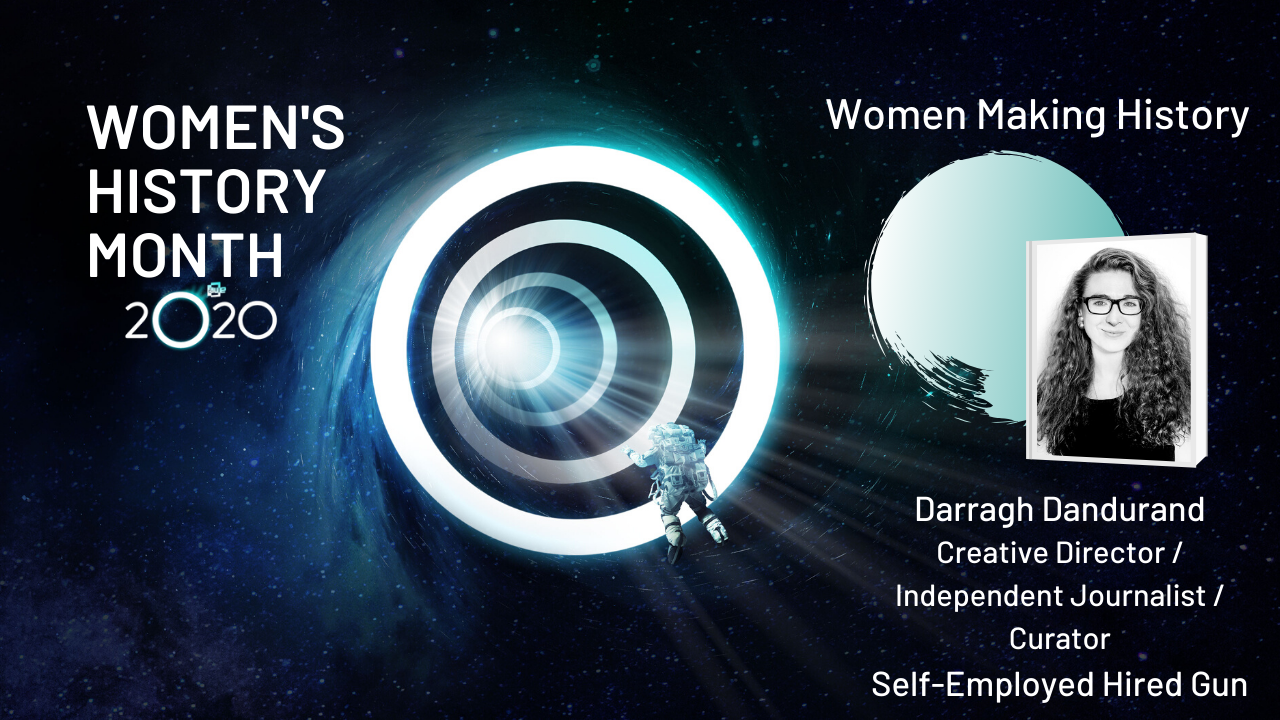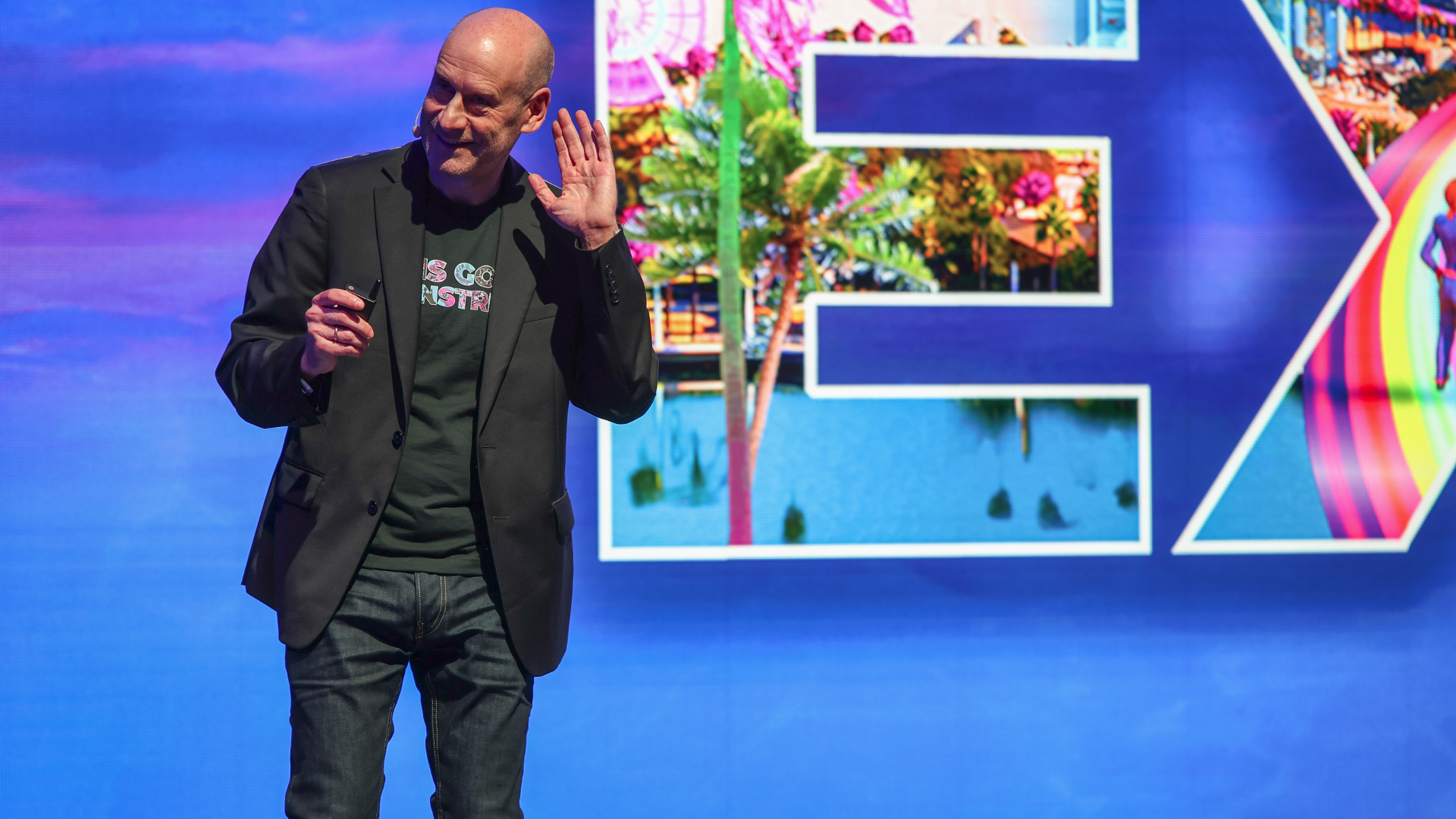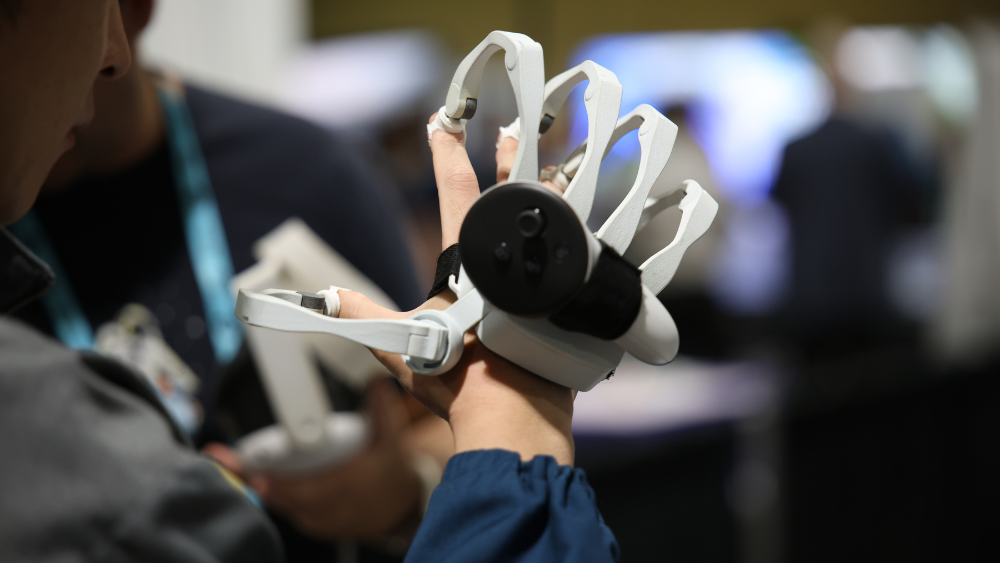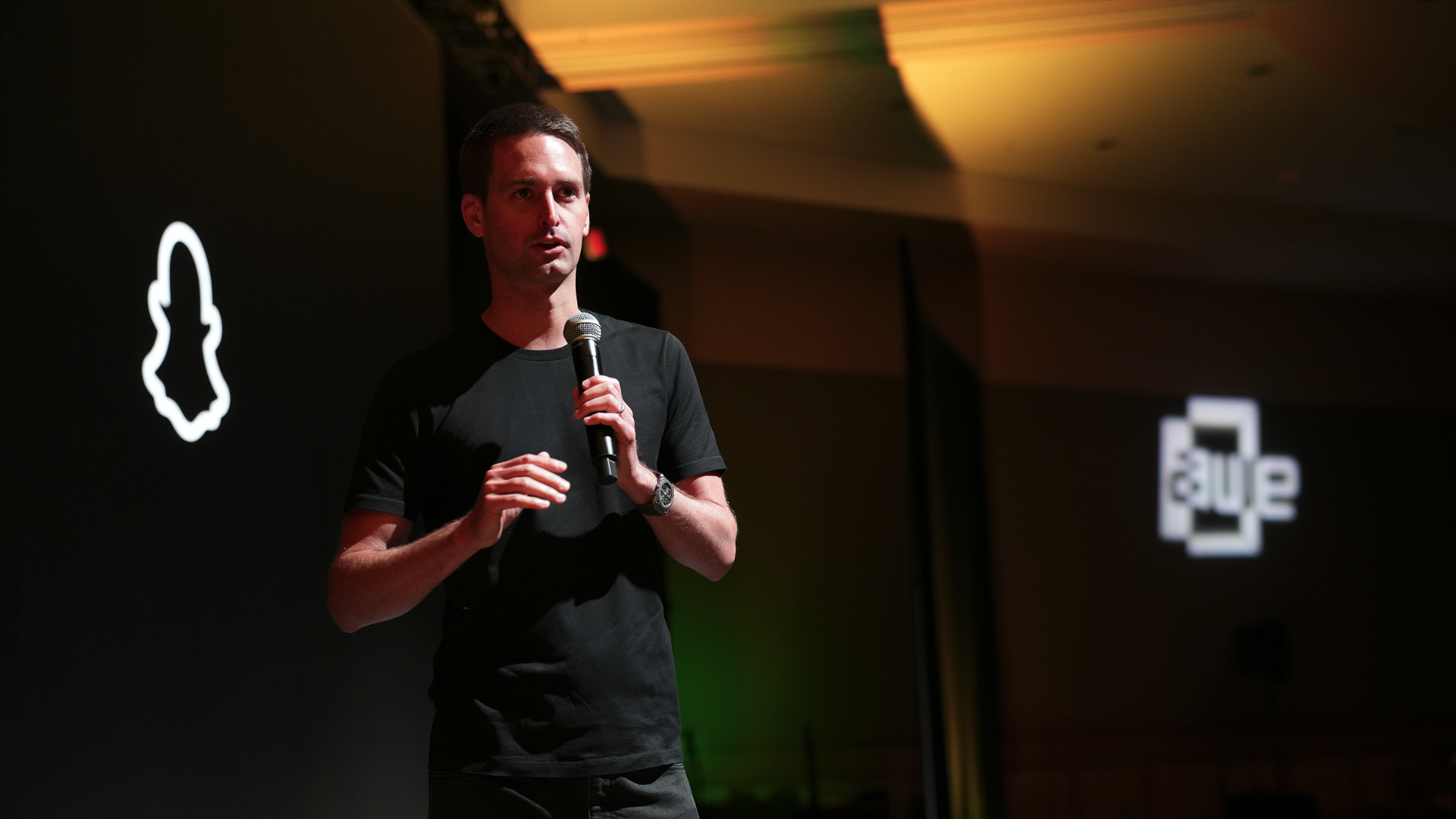Women Making History: Meet Darragh Dandurand, Creative Director / Independent Journalist / Curator, Self-Employed Hired Gun
Sorry, boys; the women of augmented and virtual reality are 'killing it.' Nevertheless, the immersive technology industry has a ways to go towards gender equality. As in the technology industry as a whole, women in XR typically receive less VC funding and occupy fewer leadership and technical positions compared to men. So, for Women's History Month 2020, we're interviewing real women who challenge the idea that the AR/VR industry lacks visible female role models. Enjoy!
1. To begin, could you provide us with a little background on yourself and your career? What does your job entail and what was your very first encounter with AR/VR?
Darragh: I've always been deeply interested in storytelling, both in understanding which stories get told and by whom, and learning how to tell them myself in compelling ways. I've often gravitated toward telling true tales as both a journalist and a director, or working with other creatives to share their stories.
My career has taken me coast-to-coast and continent-to-continent to chase experiences I want to bring into the world. I started in traditional film and found myself quickly in love with music photojournalism and directing music videos. After working in the non-profit sector and sitting on a few organizations' executive boards, I turned to working in fashion and found myself fascinated with wearables / immersive technlogy and their potential.
My start in VR was in San Francisco through Boost VC at a creative studio where I did marketing, set design, prototyping, storyboarding and distribution for a narrative title we shipped and debuted at international festivals shortly after I joined. Since moving on, I report on XR industry news, mostly for VRScout, curate exhibitions featuring XR titles, and consult as a creative strategist and director for a number of media outlets and studios, including Refinery29, VICE, the New Museum, iHeartMedia, Buck Creative Studio, Superbright Technology Studio, Sensorium Immersive and Interactive, Andromeda Entertainment, and Kinemotik Game Studio.
2. What is it like as a woman working in AR/VR?
Darragh: It's wonderful because XR is filled with other excited people who are trying to build a sustainable and prolific industry. The hard days are the ones with a twinge of sexism, but those are becoming less frequent as the fall of powerful men in the media and politics is broadcast loudly.
3. What challenges do you face that your male colleagues and peers don't?
Darragh: Most of the time I feel no difference in my treatment compared to male peers in XR, although I assume they are never asked if they are the boyfriend / husband / partner of a female colleague while I've been asked the equivalent at conferences, premieres and events. I've also seen men who are underqualified win out on opportunities that (over)qualified women should have received, mostly because of their connections and bonds with those in power.
4. Have you ever felt judged or overlooked because of your gender?
Darragh: Like many women, there are times I have certainly felt either singled out or ignored because of my gender identity. Depending on the situation, I've learned to not give any attention to the frustration or to call it out immediately. We all have our stories and I use my experiences with sexism to help me make better working environments for others. Although XR is part of the male-dominated tech industry, I truly feel the vast majority of my experiences while working in the field have been productive and positive, supportive and uplifting whether I'm working on a team for a long while, as a consultant for a brief period, or as a journalist out covering industry news.
5. What about the user experience for women; how do today's XR devices fit and perform for women?
Darragh: I have a lot of thoughts on this and published a piece on VRScout specific to this topic titled The Future of Fashion. The wearable tech industry needs to be more conscious of diverse bodies, and in turn, inclusive industrial design. So many of the products pushed to consumers are not built with different body types in mind and that choice minimizes adoption for over half of the population. The XR industry would benefit greatly by hiring more women to design wearable hardware and taking into consideration headset designs that consider hairstyles and cosmetic use. I know there are hardworking designers in our industry that are testing out new shapes and styles for HMDs, but a solid headset alternative that does incorporate more thoughtful adjustments than our current offerings will be a welcome, smart move.
6. Do you feel there's a lack of content for women AR/VR users? What would you like to see?
Darragh: I think the follow up question is "What is content for women?" I believe that we need to reassess what it is that brings and keeps women's attention when it comes to media consumption. Together we're creating a whole new universe of content via XR and should be testing what works and what doesn't for different audiences as much as we possibly can in these early stages.
7. What is your advice to women who want to break into AR/VR?
Darragh: Come and join us. Get on over here. We're waiting for you to bring your talents and passions to make this industry even better. I've met some of the most interesting and intelligent women through working in XR. They come to the table with enthusiasm and ideas and together we create a force of community when it comes to our support of one another. Women seem to find ways to celebrate our own because we know we have to stick up for each other. It's a beautiful thing to be part of, especially in a time of empowerment for women globally.
8. What would you like to say to men in the space? What should they be doing to help women in tech?
Darragh: A 'thank you' to many men who have shown kindness to me and support for my work and ideas, who have hired me, who I have managed, and those who have respected my choices and creativity. Our male colleagues who feel threatened or worried by an increasing number of women in the space should understand that diverse teams are statistically proven to be better, stronger, healthier teams. We're all here to build the future together, so let's make it one of shared equality and excitement.
9. What is the most critical issue for women in AR/VR in the next decade?
Darragh: Funding. This is an unprecedented time in which women have more rights than ever before, but we're still not treated equally at all turns. Investors need to confidently trust in women-lead businesses and ventures. Making sure we keep up the support. Overwhelmingly, I see women supporting women and we have to keep it that way. No one wins without team effort; credit where credit is due.
Darragh Dandurand is an award-winning creative consulting media outlets and studios working in emerging technology and new media. As a journalist she reports on arts, culture, entertainment, politics and tech. She is exploring and speaks on the intersection of style, design and wearables to imagine the Future of Fashion. Twitter: @DarraghDandy | Instagram: @darraghdandurand | LinkedIn
1. To begin, could you provide us with a little background on yourself and your career? What does your job entail and what was your very first encounter with AR/VR?
Darragh: I've always been deeply interested in storytelling, both in understanding which stories get told and by whom, and learning how to tell them myself in compelling ways. I've often gravitated toward telling true tales as both a journalist and a director, or working with other creatives to share their stories.
My career has taken me coast-to-coast and continent-to-continent to chase experiences I want to bring into the world. I started in traditional film and found myself quickly in love with music photojournalism and directing music videos. After working in the non-profit sector and sitting on a few organizations' executive boards, I turned to working in fashion and found myself fascinated with wearables / immersive technlogy and their potential.
My start in VR was in San Francisco through Boost VC at a creative studio where I did marketing, set design, prototyping, storyboarding and distribution for a narrative title we shipped and debuted at international festivals shortly after I joined. Since moving on, I report on XR industry news, mostly for VRScout, curate exhibitions featuring XR titles, and consult as a creative strategist and director for a number of media outlets and studios, including Refinery29, VICE, the New Museum, iHeartMedia, Buck Creative Studio, Superbright Technology Studio, Sensorium Immersive and Interactive, Andromeda Entertainment, and Kinemotik Game Studio.
2. What is it like as a woman working in AR/VR?
Darragh: It's wonderful because XR is filled with other excited people who are trying to build a sustainable and prolific industry. The hard days are the ones with a twinge of sexism, but those are becoming less frequent as the fall of powerful men in the media and politics is broadcast loudly.
3. What challenges do you face that your male colleagues and peers don't?
Darragh: Most of the time I feel no difference in my treatment compared to male peers in XR, although I assume they are never asked if they are the boyfriend / husband / partner of a female colleague while I've been asked the equivalent at conferences, premieres and events. I've also seen men who are underqualified win out on opportunities that (over)qualified women should have received, mostly because of their connections and bonds with those in power.
4. Have you ever felt judged or overlooked because of your gender?
Darragh: Like many women, there are times I have certainly felt either singled out or ignored because of my gender identity. Depending on the situation, I've learned to not give any attention to the frustration or to call it out immediately. We all have our stories and I use my experiences with sexism to help me make better working environments for others. Although XR is part of the male-dominated tech industry, I truly feel the vast majority of my experiences while working in the field have been productive and positive, supportive and uplifting whether I'm working on a team for a long while, as a consultant for a brief period, or as a journalist out covering industry news.
5. What about the user experience for women; how do today's XR devices fit and perform for women?
Darragh: I have a lot of thoughts on this and published a piece on VRScout specific to this topic titled The Future of Fashion. The wearable tech industry needs to be more conscious of diverse bodies, and in turn, inclusive industrial design. So many of the products pushed to consumers are not built with different body types in mind and that choice minimizes adoption for over half of the population. The XR industry would benefit greatly by hiring more women to design wearable hardware and taking into consideration headset designs that consider hairstyles and cosmetic use. I know there are hardworking designers in our industry that are testing out new shapes and styles for HMDs, but a solid headset alternative that does incorporate more thoughtful adjustments than our current offerings will be a welcome, smart move.
6. Do you feel there's a lack of content for women AR/VR users? What would you like to see?
Darragh: I think the follow up question is "What is content for women?" I believe that we need to reassess what it is that brings and keeps women's attention when it comes to media consumption. Together we're creating a whole new universe of content via XR and should be testing what works and what doesn't for different audiences as much as we possibly can in these early stages.
7. What is your advice to women who want to break into AR/VR?
Darragh: Come and join us. Get on over here. We're waiting for you to bring your talents and passions to make this industry even better. I've met some of the most interesting and intelligent women through working in XR. They come to the table with enthusiasm and ideas and together we create a force of community when it comes to our support of one another. Women seem to find ways to celebrate our own because we know we have to stick up for each other. It's a beautiful thing to be part of, especially in a time of empowerment for women globally.
8. What would you like to say to men in the space? What should they be doing to help women in tech?
Darragh: A 'thank you' to many men who have shown kindness to me and support for my work and ideas, who have hired me, who I have managed, and those who have respected my choices and creativity. Our male colleagues who feel threatened or worried by an increasing number of women in the space should understand that diverse teams are statistically proven to be better, stronger, healthier teams. We're all here to build the future together, so let's make it one of shared equality and excitement.
9. What is the most critical issue for women in AR/VR in the next decade?
Darragh: Funding. This is an unprecedented time in which women have more rights than ever before, but we're still not treated equally at all turns. Investors need to confidently trust in women-lead businesses and ventures. Making sure we keep up the support. Overwhelmingly, I see women supporting women and we have to keep it that way. No one wins without team effort; credit where credit is due.
Darragh Dandurand is an award-winning creative consulting media outlets and studios working in emerging technology and new media. As a journalist she reports on arts, culture, entertainment, politics and tech. She is exploring and speaks on the intersection of style, design and wearables to imagine the Future of Fashion. Twitter: @DarraghDandy | Instagram: @darraghdandurand | LinkedIn



